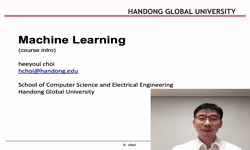스마트 적층 복합재는 뛰어난 특성을 가지고 있으며, 산업 및 공학 분야에서 다양한 응용 재료로 선호되고 있다. 하지만 복합 재료의 이방성 및 비등방성으로 인해 스마트 적층 복합재는 아...
http://chineseinput.net/에서 pinyin(병음)방식으로 중국어를 변환할 수 있습니다.
변환된 중국어를 복사하여 사용하시면 됩니다.
- 中文 을 입력하시려면 zhongwen을 입력하시고 space를누르시면됩니다.
- 北京 을 입력하시려면 beijing을 입력하시고 space를 누르시면 됩니다.
스마트복합재의 손상 분류 및 예측을 위한 기계학습기법 연구 = Study of Machine Learning Techniques for Classification and Prediction of Damages in Smart Composite Laminates
한글로보기부가정보
국문 초록 (Abstract)
스마트 적층 복합재는 뛰어난 특성을 가지고 있으며, 산업 및 공학 분야에서 다양한 응용 재료로 선호되고 있다. 하지만 복합 재료의 이방성 및 비등방성으로 인해 스마트 적층 복합재는 아주 복잡한 파괴 모드를 가지며, 이로 인해 비파괴 검사나 실시간 구조 건전성 평가에 많은 어려움을 야기한다. 본 논문에서는 스마트 적층 복합재의 저주파 구조 진동 응답으로부터 주구조물의 층간 분리, 센서 및 액추에이터의 부분 분리 등과 같은 다중 손상의 분류 및 예측을 위한 시스템 식별과 기계 학습의 효과적인 결합에 대한 연구를 수행하였다. 스마트 적층 복합재의 층간 분리 및 트랜스듀서 부분 분리에 대한 효과적인 모델링과 전기-기계 연성효과를 모사하기 위해 향상된 층간 변위장 및 고차전기포텐셜을 도입하였다. 유한요소법과 확장된 해밀턴의 원리를 적용하여 운동방정식을 유도하였다. 개발된 모델을 적용하여, 센서의 부분 분리가 있는 스마트 적층 복합재의 동적 응답에 대해 먼저 해석하였다. 다음으로 구조적인 층간 분리와 트랜스듀서의 부분 분리가 같이 나타나는 경우에 대해 연구하였다. 액추에이터를 이용하여 랜덤조화가진을 손상이 있는 경우와 없는 경우의 구조물에 대하여 가하였으며, 시간영역에서 운동방정식을 풀어 표면에 부착된 센서의 과도응답을 구하였다. 압전소자의 입력-출력 정보와 시스템 식별 알고리즘을 통해 식별 특징공간을 구성하였다. 스마트 적층 복합재의 다중 손상이 있는 경우의 손상 분류 및 예측을 위한 식별 특징 공간을 조사하기 위해 지도학습, 비지도학습 등 다양한 기계학습 기술들을 적용하였으며, 최적의 지도학습 분류법을 확인하였다. 결과들은 물리적으로 합리적이며, 제안한 기법은 사전 정의된 손상 임계치를 적용하면 스마트 적층 복합재의 자율적 구조 건전성 평가를 위해 사용할 수 있다.
다국어 초록 (Multilingual Abstract)
Smart Composite laminates have remarkable properties and are becoming preferred materials in a wide variety of industrial and engineering applications. However, due to anisotropic and heterogeneous nature of composite materials, the complex failure mo...
Smart Composite laminates have remarkable properties and are becoming preferred materials in a wide variety of industrial and engineering applications. However, due to anisotropic and heterogeneous nature of composite materials, the complex failure modes of smart composite laminates pose challenges in nondestructive evaluation and structural health monitoring of these materials. This thesis investigates the synergetic integration of system identification and machine learning for the classification and prediction of multi-damages (delaminations in the host structure, debonding of transducers) in smart composite laminates from their low frequency structural vibration response. Improved layerwise theory and higher order electric potential field are incorporated to develop the electromechanically coupled displacement field of the smart laminated composite with structural delaminations and transducers (piezoelectric sensor & actuator) partial debonding. Finite element method and extended Hamilton’s principle are employed to obtain the governing equation of motion. At first, the developed model is employed to study the effect of sensor partial debonding on dynamic response of smart composite laminates. At the next stage, the combined problem of structural delaminations and transducers partial debonding is considered. A set of random harmonic excitations is applied to the healthy and damaged structures through the actuator and the corresponding transient responses are obtained through a surface bonded sensor by solving the governing equation in the time domain. The discriminative feature space is constructed by processing the input-output information of piezoelectric transducers via a system identification algorithm. Various machine learning techniques (both supervised & unsupervised) are employed to investigate the discriminative feature space for the classification and predictions of multi-damages in smart composite laminates and optimum supervised learning classifiers are identified. Results of the proposed technique are consistent with physics of the problem and could be used for autonomous structural health monitoring of smart composite laminates with a predefined damage threshold.
목차 (Table of Contents)
- Chapter 1 Introduction 1
- 1.1 Motivation 1
- 1.2 Smart Composite Laminates 3
- 1.2.1 Composite Materials 4
- 1.2.2 Smart composite laminate 7
- Chapter 1 Introduction 1
- 1.1 Motivation 1
- 1.2 Smart Composite Laminates 3
- 1.2.1 Composite Materials 4
- 1.2.2 Smart composite laminate 7
- 1.2.3 Damages in smart composite laminates 8
- 1.3 Structural Health Monitoring 9
- 1.3.1 Machine learning for SHM 10
- 1.4 Objectives of thesis 12
- Chapter 2 Mathematical Formulation 14
- 2.1 Related Work 14
- 2.2 Problem description 17
- 2.3 Constitutive Relations 18
- 2.3.1 Laminated Composite 18
- 2.3.1.1 Transformation of coordinates 21
- 2.3.2 Piezoelectric material as sensors and actuators 23
- 2.4 Layerwise displacement field 27
- 2.4.1 Mathematical form of layerwise theory 28
- 2.5 Higher order electric potential field 31
- 2.6 Finite element model 32
- 2.6.1 Variational principle and governing equation 35
- 2.7 Sensor model with partial debonding 38
- Chapter 3 Dynamic analysis of sensor debonding failure 43
- 3.1 Transient Analysis 44
- 3.2 Power Spectral Density Analysis 49
- 3.3 Severity assessment 52
- Chapter 4 Damage classification with machine learning 54
- 4.1 Damage Sensitive Features 57
- 4.2 Pattern visualization 62
- 4.3 Supervised learning classifiers 65
- 4.3.1 Working Principle of supervised classifiers 65
- 4.3.1 Comparison of supervised classifier 67
- 4.4 Prediction of new damages 71
- Chapter 5 Conclusions and Future Work 76
- 5.1 Conclusions 76
- 5.2 Future Work 78
- Appendix A 79
- Appendix B 82
- References 84
- ABSTRACT 91
- 요약문 93












